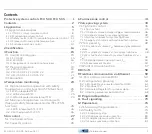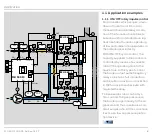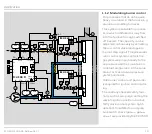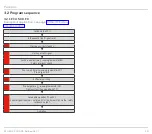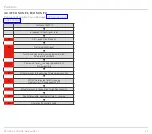
FCU 500, FCU 505 · Edition 02.17
12
Application
1 .1 .4 Flame control using the temperature
FCU 500..H1
M
HT
18
HT
HT
BCU 56x..D
49
5
µC
BCU 56x..D
49
5
µC
5-8
STM
In high temperature systems (temperature > 750°C),
the flame may be controlled indirectly via the tempera-
ture. As long as the temperature in the furnace chamber
is below 750°C, the flame must be controlled by con-
ventional methods.
If the temperature in the furnace chamber rises above
the spontaneous ignition temperature of the gas/air
mixture (> 750°C), the FCU signals to the burner control
units via the fail-safe HT output that the furnace sys-
tem is in High temperature mode (HT). When the HT in-
put is activated, the burner control units switch to High
temperature mode. They operate without evaluation of
the flame signal and their internal flame control system
is non-functional.
If the furnace temperature falls below the spontaneous
ignition temperature (< 750°C), the FCU disconnects
the HT output from the electrical power supply. There
is no active signal at the HT inputs of the burner control
units. The flame signals are monitored once again by
the UV sensor or flame rod.
In the event of a fault in a temperature monitoring com-
ponent (e.g. sensor discontinuity, sensor short-circuit)
or in the event of a mains failure, the flame control task
is transferred to the burner control units.


